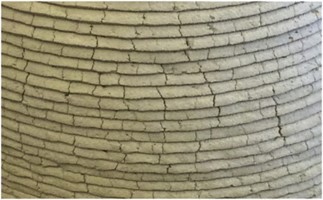
Modelling thermally- and hygrally-induced cracking in 3D printed concrete
3D printed concrete structures are typically thin-walled when optimized towards material minimization, which increases the risk of thermally or hygrally-induced cracking. Therefore, models need to be developed that can predict the risk of cracking and provide mitigating guidelines to designers.
3D printed structures are thin-walled by nature. Therefore, e.g., printed walls and bridges easily adapt to ambient temperatures and moisture conditions. However, variations in concrete temperatures and moisture potential comes with stresses if thermal and hygral strain changes are restrained. In practice this result (too) often in cracks. It is for this reason a validated FEM tool is needed to be able to calculate the risk of cracking due to restrained deformations. Such a model can not only predict the risk of cracking but also define conditions for mortars in terms of maximum shrinkage properties and support the design of printed structures to limit the level of restraining. Such a model is under construction, and we would like to follow up on a previous master student graduation project. The graduation project consists of working on parts of the FEM model, adding relevant modules to increase the predictability and make changes to take varying ambient conditions into account. Currently, laboratory tests are being performed to serve as reference tests to calibrate the model and a consulting engineering company. Next to this, a large data set is available on the houses and bridges we printed in the past. These structures can studied using the FEM model to learn what went wrong and, as a next step, study how the design or curing conditions should be adapted to avoid cracks in the future. It is for this reason that a close collaboration with industry is part of this graduation project.